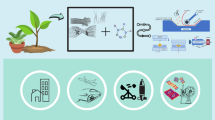Abstract
Fibrillated kraft pulp impregnated with phenolic resin was compressed under an extremely high pressure of 100 MPa to produce high strength cellulose nanocomposites. To evaluate how the degree of fibrillation of pulp fiber affects the mechanical properties of the final composites, kraft pulp subjected to various levels of refining and high pressure homogenization treatments was used as raw material with different phenolic resin contents. It was found that fibrillation solely of the surface of the fibers is not effective in improving composite strength, though there is a distinct point in the fibrillation stage at which an abrupt increase in the mechanical properties of composites occurs. In the range between 16 and 30 passes through refiner treatments, pulp fibers underwent a degree of fibrillation that resulted in a stepwise increment of mechanical properties, most strikingly in bending strength. This increase was attributed to the complete fibrillation of the bulk of the fibers. For additional high pressure homogenization-treated pulps, composite strength increased linearly against water retention values, which characterize the cellulose’s exposed surface area, and reached maximum value at 14 passes through the homogenizer.
Similar content being viewed by others
References
D.H. Page, F. El-Hosseiny: J. Pulp Pap. Sci. 9, 99 (1983)
R.M. Rowell, R.A. Young, J.K. Rowell: Paper and Composites from Agro-Based Resources (CRC Lewis, Boca Raton 1997) p. 69
J.G. Haygreen, J.L. Bowyer: Forest Products and Wood Science, an Introduction (Iowa State Uni. Press, Ames 1982) p. 403
A.N. Nakagaito, H. Yano: Appl. Phys. A, DOI: 10.1007/s00339-003-2225-2
J.C. Roux, T.L. Mayade: Powder Technol. 105, 237 (1999)
F.W. Herrick, R.L. Casebier, J.K. Hamilton, K.R. Sandberg: J. Appl. Polym. Sci.: Appl. Polym. Symp. 37, 797 (1983)
A.F. Turbak, F.W. Snyder, K.R. Sandberg: J. Appl. Polym. Sci.: Appl. Polym. Symp. 37, 815 (1983)
W.Y. Hamad: Cellulose: 4, 51 (1997)
Author information
Authors and Affiliations
Corresponding author
Additional information
PACS
81.05.Lg; 81.05.Qk
Rights and permissions
About this article
Cite this article
Nakagaito, A., Yano, H. The effect of morphological changes from pulp fiber towards nano-scale fibrillated cellulose on the mechanical properties of high-strength plant fiber based composites. Appl Phys A 78, 547–552 (2004). https://doi.org/10.1007/s00339-003-2453-5
Received:
Accepted:
Published:
Issue Date:
DOI: https://doi.org/10.1007/s00339-003-2453-5




